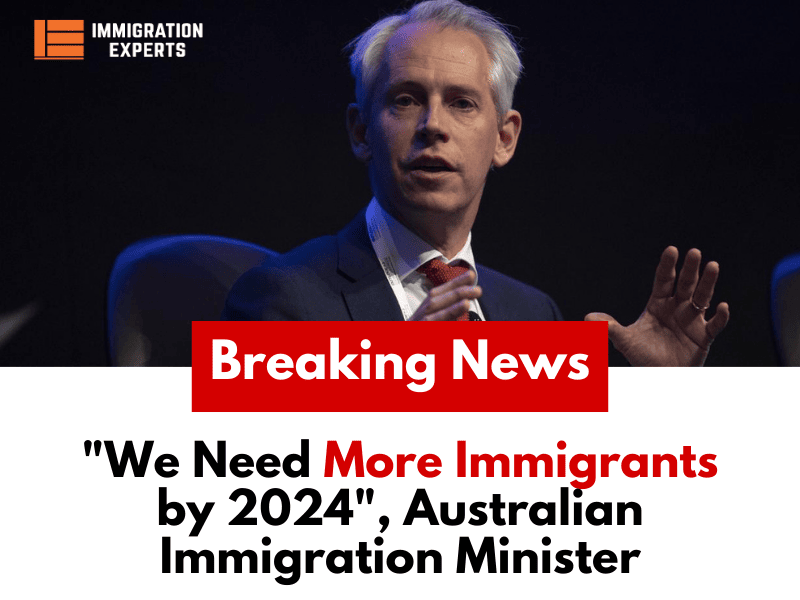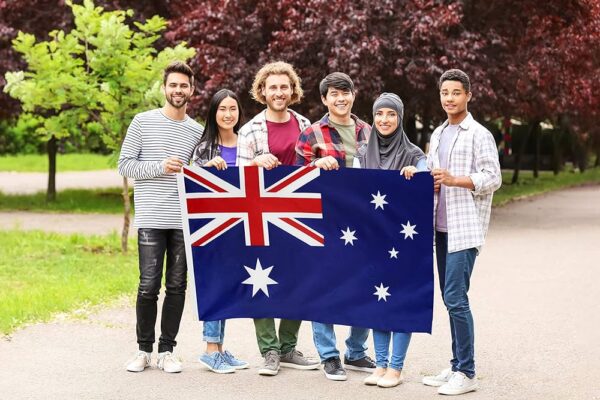051 8439995, 042 35911332

Australia’s Immigration Minister, Andrew Giles, emphasizes the need for skilled migrants in constructing homes. He urges a thoughtful discussion on the impact of rising overseas arrivals on the housing crisis. Despite a lower population than pre-pandemic projections, Giles highlights significant challenges for mortgage holders and renters in the housing market.
In an interview, Andrew Giles emphasizes the importance of a careful debate on immigration. He points out that a key factor driving increased demand is the shortage of skills required for building houses in Australia. This situation puts the Albanese government in a challenging position, trying to limit overseas migration while ensuring the country gets the necessary skills for vital industries, such as construction.
Australia’s Construction Industry Needs 480,000 Skilled Workers
Master Builders Australia, representing the construction industry, is pushing for simpler visa processes. They aim to make it easier for skilled workers to obtain visas. They aim to address the crucial labor shortage hindering the fulfillment of the government’s ambitious housing goals.
Denita Wawn, the CEO of Master Builders Australia, states that the industry requires a minimum of 480,000 new workers in the upcoming years for regular operations. This count doesn’t encompass the substantial workforce needed for training to achieve net-zero transformation or housing accord objectives.
Upcoming Migration Plan Unveiling by Home Affairs Minister Clare O’Neil
The government is revamping the temporary migration system to attract skilled professionals from countries like Canada and the UK. Simultaneously, they are implementing measures to improve the intake of international students, ensuring they aren’t exploited as a low-paid temporary workforce at the cost of their education.
Home Affairs Minister Clare O’Neil will unveil a new migration plan by year-end. The surge in net overseas migration, hitting a record of 454,000 in the year to March, is attributed to the return of international students, now at a peak of 664,000.
Australia’s Population Trends
According to Abul Rizvi, a former high-ranking immigration official, the number is probably going to approach 500,000. In March, the Australian Bureau of Statistics said there are 26.5 million people. This is a bit less than the expected 27 million by the end of 2022, as predicted in the 2019-2020 budget.

Rizvi warns that the current net migration, standing at about 500,000, needs to be reduced. Otherwise, the situation may reverse in a few years.
Vision of Australia to Make it Big by Immigrants
The federal opposition’s immigration spokesman, Dan Tehan, emphasizes the importance of the net overseas migration figure. This figure is a crucial measure indicating how migration impacts population growth. He argues that this indicates the government’s implicit pursuit of a “big Australia.”
Earlier this year, Dan Tehan urged Home Affairs Minister Clare O’Neil to address key questions about the review. The primary query is, “How large does Labor envision ‘Big Australia’ becoming?”
In less than a year, the Labor government has increased the permanent migration cap by 35,000. Additionally, they expect a net migration increase of 650,000 in the next two years. Moreover, there’s no apparent strategy for the growing number of 101,000 asylum seekers. According to a July poll by Resolve Strategic, 59% of voters felt Australia’s migrant intake was excessively high.
Government MPs and the international education industry recognize that the return of international students is adding strain to an already stretched rental market.
Giles cautions against a resurgence of divisive rhetoric from the mid-1990s, notably when Pauline Hanson, founder of One Nation, called for net-zero migration. He highlights the historical impact of such debates in the 1980s and during Senator Hanson’s initial election to the House of Representatives.
Expressing his stance, Giles acknowledges that the net overseas migration figure is too high. In an interview with Melbourne’s 3AW radio station, he suggests it should align with budget paper forecasts, aiming for 235,000.
